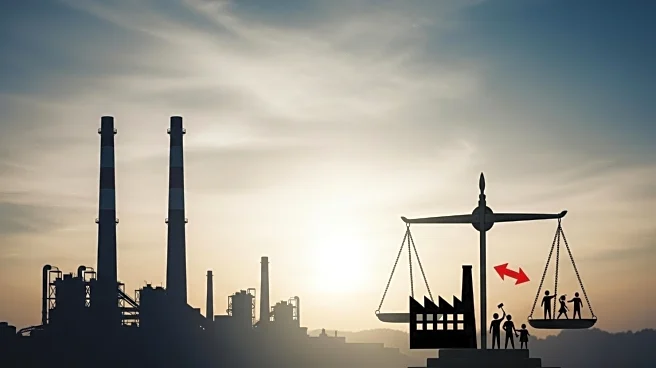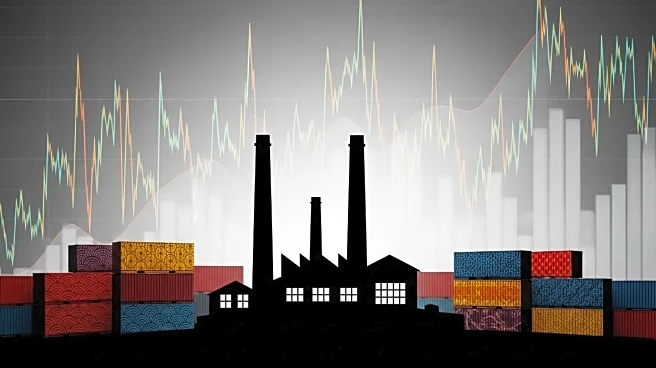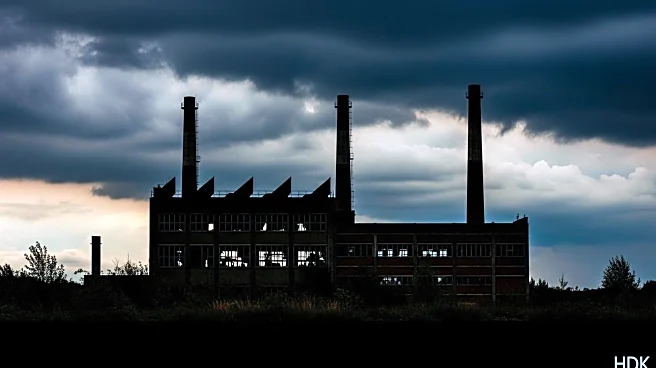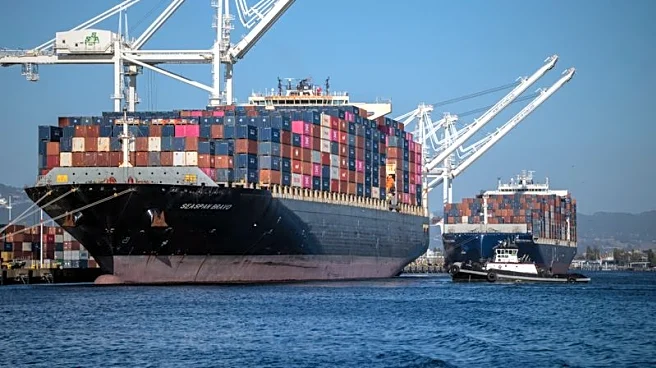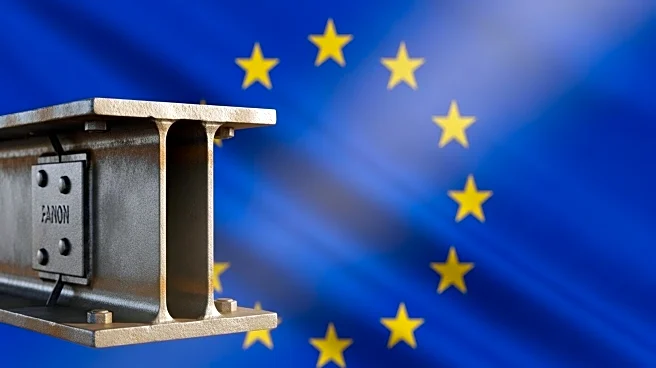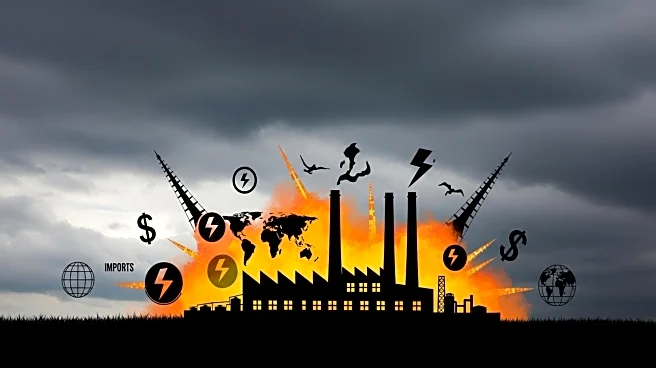What's Happening?
The European Commission has proposed significant changes to steel import quotas, aiming to enhance the EU's steel production capacity. The proposal includes cutting tariff-free steel import quotas by nearly 50% and doubling out-of-quota duties to 50%. This initiative is designed to increase EU steel production capacity from 67% to 80%. The quota volumes are tied to 2013 levels, a period identified by the Commission as the beginning of overcapacity issues. These measures require approval from EU member states before implementation.
Why It's Important?
The proposed changes to steel import quotas are crucial for the EU's steel industry, which has been struggling with overcapacity and competition from non-EU producers. By reducing import quotas and increasing duties, the EU aims to protect its domestic steel industry, potentially leading to increased production and job security within the sector. This move could also impact global steel trade dynamics, as non-EU countries may face higher barriers to entry into the European market. The decision reflects broader EU efforts to bolster its industrial base amid global economic uncertainties.
What's Next?
The proposal will be reviewed by EU member states, and if approved, it could lead to significant shifts in the European steel market. Stakeholders, including steel producers and importers, are likely to engage in discussions and lobbying efforts to influence the final decision. The outcome will determine the future landscape of the EU steel industry and its competitiveness on the global stage. Additionally, other industries reliant on steel may need to adjust to potential changes in supply and pricing.
Beyond the Headlines
The proposal highlights the EU's strategic approach to industrial policy, focusing on self-sufficiency and reducing dependency on external sources. It raises questions about the balance between protectionism and free trade, as well as the potential environmental impacts of increased domestic production. The decision could set a precedent for other sectors facing similar challenges, prompting discussions on sustainable industrial practices and economic resilience.

